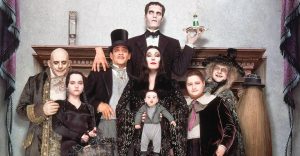The Best Viewing Order For The Marvel Cinematic Universe Phase 3

The narrative of the Marvel Cinematic Universe‘s Phase 3 could be improved by making a few changes to the viewing order. As the MCU has continued to grow, fans have found many different orders to watch MCU movies. Following the theatrical release schedule is the most common path, especially for new fans trying to enter the sprawling cinematic universe. But, as the years have gone on, everything from chronological viewing orders to character-specific arcs has been created.
The order in which all 23 MCU movies can be viewed is an exciting experiment for fans to tinker with. The overall narrative can’t be changed too much, but subtle tweaks here and there can alter how arcs both large and small will resonate with viewers. One such example comes with making a single change to the viewing order for Phase 1, with Captain America: The First Avenger able to move up and make a big impact on the other films. Similar changes can be made to Phase 2 that enhance the narrative significantly just by shifting the order from how the movies hit theaters.
Phases 1 and 2 aren’t the only sections of the MCU’s massive story that can be impacted, as Phase 3’s structure can be changed with excellent results. Phase 3 began in 2016 with the release of Captain America: Civil War and features 11 movies in total, with Spider-Man: Far From Home serving as the epilogue to the Infinity Saga. The overarching story from 2008-2019 works, and so to does Phase 3, but that doesn’t mean there isn’t room for improvement.
The Best MCU Phase 3 Viewing Order

With so many films in Phase 3, there are many different stories in play ahead of Thanos’ arrival, and in our view, the best way to experience the story would be in a completely different order. The new viewing order for Phase 3 rearranges much of the first half and allows the eleven movies to be divided up into several mini-arcs. Before we detail the benefits of the order, here’s a quick rundown of the order that will be discussed.
- Captain America: Civil War
- Spider-Man: Homecoming
- Black Panther
- Ant-Man and The Wasp
- Guardians of the Galaxy Vol. 2
- Doctor Strange
- Thor: Ragnarok
- Avengers: Infinity War
- Captain Marvel
- Avengers: Endgame
- Spider-Man: Far From Home
The Fallout Of Captain America: Civil War Stays Together

Captain America: Civil War works as a new launch point for what comes later in Phase 3 in the release order, but the fallout of the event was divided up for over two years. Our proposed changes allow Civil War to have the monumental impact it is intended to have with the fracturing of the Avengers and introductions of Spider-Man (Tom Holland) and Black Panther (Chadwick Boseman). Thanks to Marvel Studios’ release schedule, though, audiences waited three movies to see Spidey again and five to see Black Panther. These significant gaps come even though Black Panther picks up mere weeks after Civil War and Homecoming primarily taking place a few months after.
With the changes suggested to the Phase 3 order, Civil War and the fallout from the event are the focal points of the first four films. After it begins, Spider-Man: Homecoming shows one of the MCU’s newest heroes growing and what Tony Stark is up to after the collapse of the Avengers. The move to Black Panther builds on Civil War again but with a largely standalone story. Its placement also means that there are five films between Wakanda’s doors opening to the public and when the Avengers visit in Avengers: Infinity War, allowing anticipation of their return to grow. This mini-event inside Phase 3 then concludes with Ant-Man and The Wasp, which builds off Civil War by having Scott Lang under house arrest for going against the Sokovia Accords. But, Ant-Man 2‘s place at the end of the Civil War arc also allows the film to serve as the transition to the MCU’s pre-Infinity War expansion.
The MCU Expands Ahead of Infinity War

The middle section of our new look Phase 3 viewing order begins with Ant-Man and The Wasp, as the movie starts a string of releases that prove to be essential for the lead up to Infinity War. The sequel further explores the Quantum Realm, which proved to have a vital role in Avengers: Endgame. But, it is with the mid-credits scene that Marvel could’ve cleverly begun teasing the eventuality of Thanos’ victory, all without viewers having any context for Hank Pym, Janet van Dyne, and Wasp’s disappearances. It also leaves Ant-Man in the Quantum Realm for a longer time in the minds of viewers, even if the chronology of the events remains close.
After Ant-Man 2, this Phase 3 order rapidly expands the MCU through Guardians of the Galaxy Vol. 2, Doctor Strange, and Thor: Ragnarok. This begins with a cosmic adventure led by the Guardians of the Galaxy; their sequel propels the Guardians past the early 2014 missions by the end and has them on the cusp of where audiences see them again in Infinity War. Then, viewers get the MCU’s introduction to magic with Doctor Strange, which is all the more important by the reveal of the Time Stone. However, this reveal now comes with just one film between Doctor Strange and Thanos’ arrival instead of the original five-film gap. From there, Phase 3 goes back to the cosmos with Thor: Ragnarok. Strange’s cameo in the film now comes immediately after his debut, and the movie’s ending with Thanos’ ship finding Thor and Loki serves as the perfect narrative lead-in to what happens next.
Phase 3’s Conclusion Is Condensed & Enhanced

With the previous changes to Phase 3’s order, the end of the Infinity Saga is now slightly condensed, allowing for the narrative to flow better. The only difference to the end here is the removal of Ant-Man and the Wasp, which allows the gap between Infinity War and Endgame to shorten. That said, there is also another slight improvement that is made. Captain Marvel doesn’t have a perfect landing spot in Phase 3, but moving Ant-Man and the Wasp up improves its original place. Now, the film comes immediately after Infinity War‘s post-credits scene that teases Carol and Nick Fury’s connection instead of Ant-Man‘s sequel splitting up the link to the prequel. The flow from Captain Marvel to Endgame to Far From Home then proceeds as before to bring Phase 3 of the MCU to a close.
–
This alternate viewing order for Phase 3 is just one example of how the MCU’s storyline can be altered while maintaining the critical pieces of canon that have been carefully crafted to make the shared universe concept work. After all, Marvel’s original Phase 3 slate didn’t include either Spider-Man movies or Ant-Man and the Wasp and was supposed to have Inhumans be the lead in to Avengers: Infinity War – Part II (as it was then called). Marvel Studios had to change their plans as the MCU, and various studio deals and corporate structures, evolved, so its no surprise that some improvements can be made if real-world circumstances hadn’t dictated which films got made and made.
- Black Widow (2021)Release date: Jul 09, 2021
- Eternals (2021)Release date: Nov 05, 2021
- Shang-Chi and the Legend of the Ten Rings (2021)Release date: Sep 03, 2021
- Thor: Love and Thunder (2022)Release date: Jul 08, 2022
- Doctor Strange in the Multiverse of Madness (2022)Release date: May 06, 2022
- Black Panther: Wakanda Forever/Black Panther 2 (2022)Release date: Nov 11, 2022
- The Marvels/Captain Marvel 2 (2023)Release date: Feb 17, 2023
About The Author


















